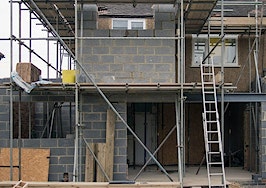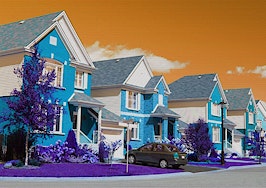Privately owned housing starts and new construction authorized by permits in the single-family sector continued to escalate in September, with the former rising to a seasonally adjusted annual rate of 1.41 million units, up 1.9 percent from a revised August estimate, according to data released Tuesday by the U.S. Census Bureau.
Single-family housing starts, meanwhile, clocked in at 1,108,000 units, 8.5 percent higher than the revised August numbers, according to the Census data.
Privately-owned housing units authorized by building permits were up 5.2 percent from August, and single-family authorizations were up 7.8 percent from the previous month. Month-over-month completions in both of these categories were up by 15.3 percent and 2.1 percent, respectively.
Gains in building permits and housing starts in September were largely driven by activity in the Northeast. In this region, the total number of new privately-owned housing units authorized on a seasonally adjusted basis were up by 25.8 percent from August, and the total number of new privately-owned housing units started were up by 66.7 percent from August.
“Today’s U.S. Census data shows that permits, starts and completions were bolstered by record-high builder optimism, and a strong wave of buyer demand in September,” realtor.com Senior Economist George Ratiu said in a statement. “However, homebuilders must balance the need to address an acute shortage of housing with the increasing costs of labor, materials and land.”
Amid a surge in demand for homes in which to comfortably shelter in place during the pandemic, widespread low inventory has caused pains for buyers and Realtors alike across the country, but these numbers show early signs that builder confidence may be able to chip away at demand in upcoming months — if they can grapple with shortages and rising costs of materials, like lumber.
“The real estate market is unseasonably active for this late in the year, as buyers are still playing catch-up from the spring lockdown,” Ratiu added. “With mortgage rates at new lows, many home shoppers are actively pursuing a home for the new environment of live, work, school, play and exercise under one roof. The search is translating into multiple bid offers in suburbs across the country, where greener backyards, larger homes and access to the outdoors are beckoning young professionals and families alike.”
“The good news is that builders are already present in these neighborhoods, and in a good position to respond to shifting consumer preferences,” he concluded. “However, a significant volume of new homes is needed to redress the existing imbalance between supply and demand, and tame the sharp jump in prices.”
Dr. Lawrence Yun, chief economist for the National Association of Realtors (NAR), echoed the sentiment that, although September’s positive numbers are welcome news, more work still needs to be done to boost inventory.
“A gain of 8.1 percent from a year ago to 1.415 million new unit production (annualized) is good, but far more units are needed,” Yun said in a statement. “Housing permits, a precursor to starts, were better at 1.55 million. Rising lumber prices and a shortage of construction workers could present challenges. The country needs to boost vocational training to move workers who lost jobs in retail, restaurants, and hotels into the higher paying construction industry.”













